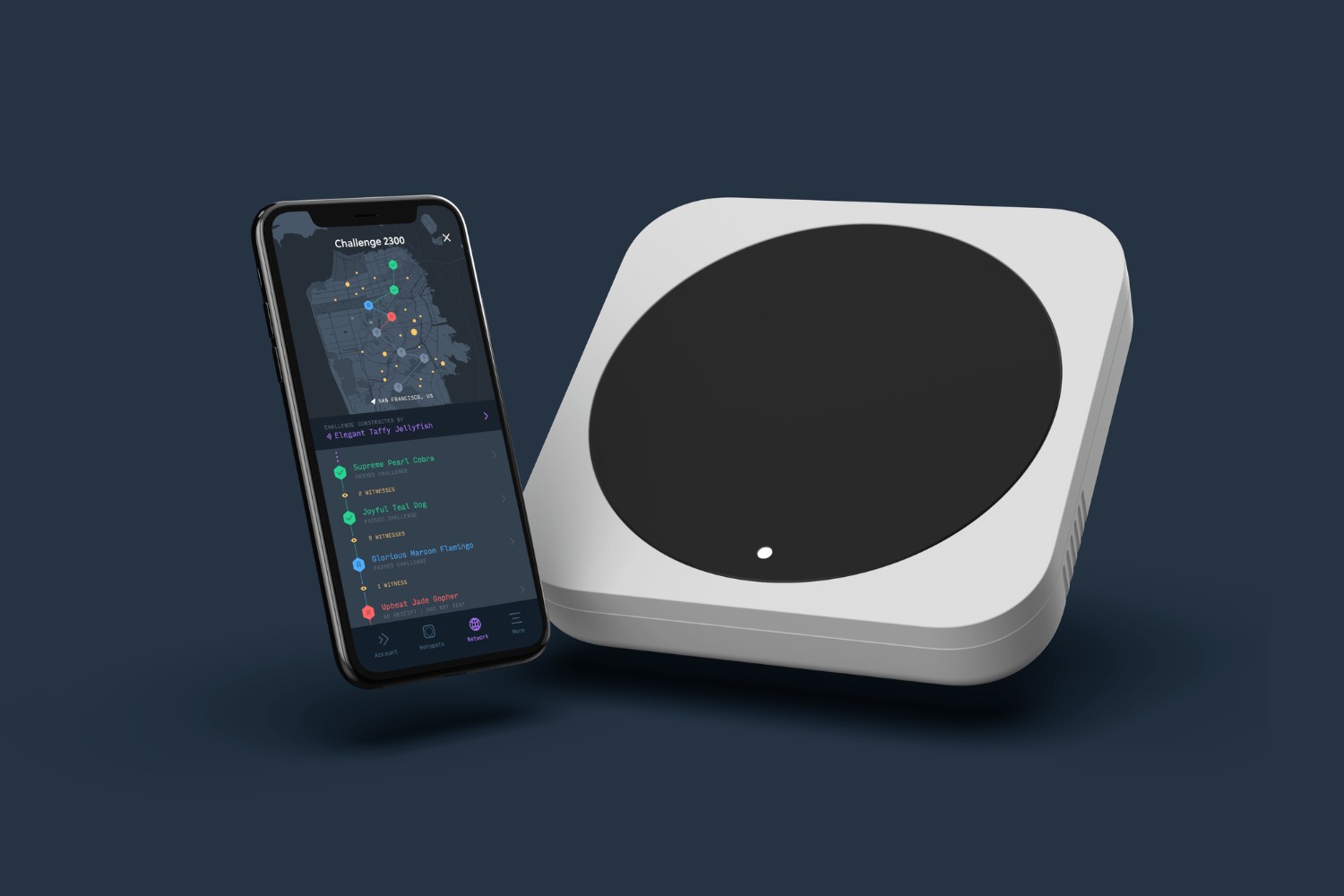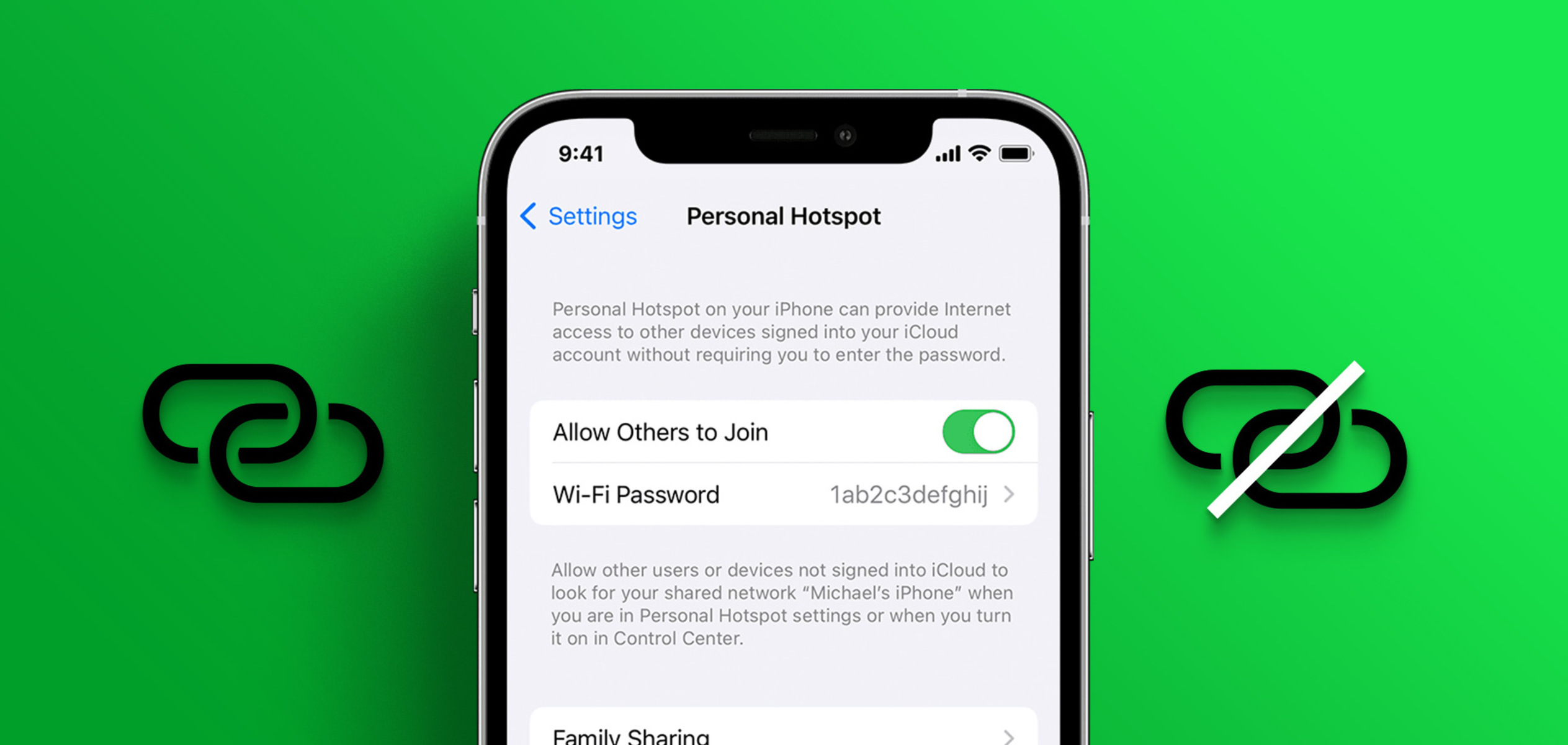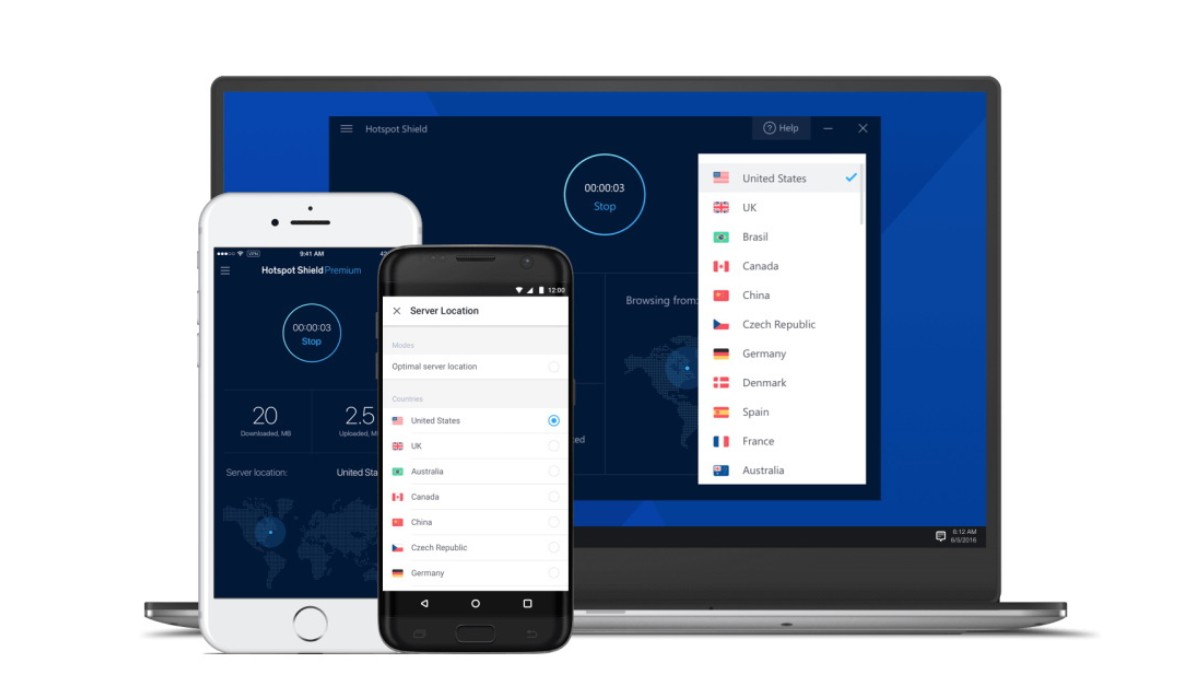Introduction
In today's fast-paced digital age, staying connected is more crucial than ever. Whether it's for work, leisure, or simply keeping in touch with friends and family, having access to the internet has become a necessity. While traditional wired connections serve as a reliable means of connectivity, the demand for mobility and convenience has given rise to an innovative solution – the hotspot.
Hotspots have revolutionized the way we access the internet, providing flexibility and accessibility in diverse settings. From bustling coffee shops to remote outdoor locations, hotspots enable users to connect their devices to the internet with ease. Understanding the functionality of hotspots is essential for maximizing their benefits and ensuring a seamless online experience.
In this comprehensive guide, we will delve into the intricacies of hotspots, exploring their operation, benefits, security considerations, and much more. By gaining insights into the inner workings of hotspots, you'll be better equipped to harness their potential and make informed decisions when it comes to connectivity solutions.
So, let's embark on a journey to unravel the mysteries of hotspots and discover the myriad ways in which they have transformed the digital landscape. Whether you're a tech enthusiast, a business professional, or simply someone who values staying connected on the go, this exploration of hotspots will provide valuable knowledge and insights. Let's delve into the world of hotspots and unlock their full potential.
What is a Hotspot?
A hotspot refers to a physical location where people can access the internet, typically using Wi-Fi technology. It serves as a wireless access point that enables users to connect their devices, such as smartphones, laptops, and tablets, to the internet within a specific range. Hotspots are commonly found in public spaces such as cafes, airports, hotels, and libraries, offering a convenient means of accessing online resources while on the go.
Essentially, a hotspot acts as a gateway to the internet, allowing individuals to bypass traditional wired connections and enjoy wireless connectivity. This flexibility is especially valuable in today's dynamic work and leisure environments, where mobility and convenience are highly prized.
Moreover, hotspots can be created using various devices, including dedicated hotspot routers, smartphones with tethering capabilities, and portable Wi-Fi hotspots. These devices generate a local Wi-Fi network, enabling multiple users to connect simultaneously and access the internet, making them ideal for scenarios where wired connections are impractical or unavailable.
In essence, a hotspot serves as a digital oasis, providing a bridge between users and the vast expanse of the internet. By understanding the fundamental concept of hotspots, individuals can harness their potential to stay connected, collaborate, and access information from virtually anywhere. Whether it's checking emails during a layover at the airport or conducting a virtual meeting in a bustling city center, hotspots empower individuals to transcend physical boundaries and remain plugged into the digital realm.
As we continue our exploration of hotspots, it's important to delve deeper into their underlying mechanics and the various ways in which they facilitate seamless connectivity. By unraveling the intricacies of hotspots, we can gain a comprehensive understanding of their role in shaping our interconnected world.
Understanding the concept of a hotspot is the first step toward embracing its versatility and leveraging its benefits. Now, let's delve into the operational aspects of hotspots to uncover the magic that powers these indispensable gateways to the digital domain.
How Does a Hotspot Work?
At its core, the functionality of a hotspot revolves around the concept of wireless communication and network access. A hotspot operates by creating a localized Wi-Fi network that allows users to connect their devices to the internet without the need for physical cables. This process involves a series of intricate steps that seamlessly facilitate wireless connectivity in diverse settings.
Network Establishment:
When a hotspot is activated, whether through a dedicated hotspot device or a smartphone with tethering capabilities, it initiates the creation of a wireless network. This network is akin to a digital bridge that extends internet access to nearby devices within its coverage area. By leveraging Wi-Fi technology, the hotspot effectively serves as an access point, enabling users to establish a connection to the internet without being tethered to a specific location.
Internet Access Provision:
Once the network is established, the hotspot device or smartphone acts as a gateway, relaying data between connected devices and the internet. This pivotal role allows users to access online resources, browse the web, stream media, and engage in various online activities with the same level of freedom and flexibility as a traditional wired connection. The seamless provision of internet access is a hallmark of hotspot functionality, catering to the diverse connectivity needs of modern-day users.
User Authentication and Security:
In addition to facilitating internet access, hotspots often incorporate authentication and security measures to safeguard users' privacy and data integrity. This includes password protection, encryption protocols, and user authentication mechanisms to ensure that only authorized individuals can connect to the hotspot and access its services. By prioritizing security, hotspots offer a secure and reliable means of connectivity, instilling confidence in users as they navigate the digital landscape.
Seamless Integration with Devices:
Hotspots are designed to seamlessly integrate with a wide array of devices, including smartphones, laptops, tablets, and IoT (Internet of Things) gadgets. This compatibility ensures that users can leverage the hotspot's connectivity features across their diverse range of digital tools, empowering them to stay connected and productive regardless of their location. The ability to effortlessly connect and disconnect from a hotspot underscores its user-friendly design and universal appeal.
In essence, the operation of a hotspot hinges on its ability to establish a localized wireless network, provide internet access, prioritize security, and seamlessly integrate with a myriad of devices. By mastering these operational intricacies, hotspots have emerged as indispensable tools for fostering connectivity, collaboration, and digital accessibility in an increasingly mobile-centric world.
Benefits of Using a Hotspot
Hotspots offer a myriad of benefits that cater to the diverse connectivity needs of modern-day individuals and businesses. Understanding these advantages is crucial for appreciating the pivotal role that hotspots play in facilitating seamless access to the internet in various settings. Here are some key benefits of using a hotspot:
-
Mobility and Flexibility: Hotspots empower users to break free from the constraints of traditional wired connections, allowing them to access the internet from virtually anywhere within the hotspot's coverage area. Whether it's a bustling coffee shop, a serene park, or a remote work site, the mobility and flexibility afforded by hotspots enable individuals to stay connected on the go, fostering productivity and collaboration in diverse environments.
-
On-the-Go Connectivity: With the proliferation of smartphones, laptops, and other portable devices, the need for on-the-go connectivity has become increasingly prevalent. Hotspots address this need by providing a convenient means of accessing the internet while traveling, commuting, or engaging in outdoor activities. This seamless connectivity ensures that individuals can remain plugged into the digital realm, regardless of their location or itinerary.
-
Business and Productivity: For professionals and businesses, hotspots serve as invaluable tools for conducting remote work, hosting virtual meetings, and staying productive outside the confines of a traditional office. The ability to set up impromptu workstations and collaborate with colleagues or clients in diverse locations enhances operational agility and fosters a dynamic work culture.
-
Cost-Effective Connectivity: Hotspots offer a cost-effective alternative to traditional wired internet connections, particularly in scenarios where setting up infrastructure or subscribing to long-term contracts may not be feasible. Whether it's a temporary event, a pop-up shop, or a construction site, hotspots provide a practical and economical means of establishing internet connectivity without the overhead costs associated with fixed-line installations.
-
Enhanced Customer Experience: Businesses in the hospitality, retail, and service industries can leverage hotspots to enhance the customer experience. By offering complimentary Wi-Fi access to patrons, establishments can attract and retain customers while enriching their overall experience. This customer-centric approach underscores the value of hotspots in fostering positive interactions and brand loyalty.
-
Emergency Connectivity: In emergency situations or during network outages, hotspots can serve as lifelines, providing essential connectivity for communication, information access, and coordination of relief efforts. Their portability and quick deployment make hotspots indispensable in scenarios where traditional communication channels may be disrupted.
By harnessing these benefits, individuals and organizations can leverage hotspots as versatile tools for staying connected, driving productivity, and enriching the digital experience in a fast-paced and interconnected world.
Types of Hotspots
Public Hotspots:
Public hotspots are ubiquitous in commercial establishments, public spaces, and transportation hubs. These hotspots are typically provided by businesses, such as cafes, restaurants, and hotels, to offer complimentary or paid Wi-Fi access to their patrons. Additionally, public institutions, such as libraries and airports, often host public hotspots to cater to the connectivity needs of visitors. Public hotspots play a pivotal role in fostering connectivity and enhancing the overall customer experience, making them an integral part of modern-day hospitality and service industries.
Private Hotspots:
Private hotspots, also known as personal hotspots, are created using devices such as smartphones, dedicated hotspot routers, or portable Wi-Fi hotspots. These hotspots are designed for personal use, allowing individuals to establish secure and controlled wireless networks for their exclusive connectivity needs. Whether it's sharing internet access with family members at home, setting up a temporary office during travel, or ensuring seamless connectivity for personal devices, private hotspots offer a versatile and tailored approach to wireless internet access.
Community Hotspots:
Community hotspots are initiatives aimed at extending internet access to underserved or remote areas, fostering digital inclusion and connectivity. These hotspots are often deployed in collaboration with local organizations, governments, or non-profit entities to bridge the digital divide and empower communities with online resources. Community hotspots play a crucial role in facilitating educational, economic, and social development by providing internet access to individuals and groups who may have limited connectivity options.
Mobile Hotspots:
Mobile hotspots, also referred to as tethering, enable users to share the internet connection from their smartphones with other devices, effectively turning the phone into a portable Wi-Fi hotspot. This feature allows individuals to leverage their cellular data plans to provide internet access to laptops, tablets, and other Wi-Fi-enabled devices. Mobile hotspots are particularly valuable for individuals who require on-the-go connectivity without relying on fixed Wi-Fi networks, offering a convenient and flexible solution for staying connected while traveling or working remotely.
Enterprise Hotspots:
Enterprise hotspots are tailored solutions designed to meet the connectivity needs of businesses, organizations, and institutions. These hotspots are often integrated into comprehensive network infrastructure, offering advanced features such as centralized management, user authentication, and seamless integration with enterprise IT systems. Enterprise hotspots are instrumental in supporting large-scale connectivity requirements, ensuring robust and secure wireless access for employees, guests, and IoT devices within corporate environments.
By understanding the diverse types of hotspots and their respective applications, individuals and organizations can identify the most suitable solutions to meet their specific connectivity needs, whether it's for personal, commercial, or community-oriented purposes. Each type of hotspot offers unique features and benefits, catering to the evolving demands of a digitally interconnected society.
Common Hotspot Features
Hotspots encompass a range of features that contribute to their functionality, versatility, and user appeal. These features are instrumental in shaping the user experience and ensuring seamless connectivity across diverse settings. Understanding the common hotspot features is essential for evaluating their suitability for specific use cases and maximizing their potential in various scenarios.
-
Wireless Access Point: At the core of every hotspot is its role as a wireless access point. This feature enables users to connect their devices to the internet via Wi-Fi, eliminating the need for physical cable connections and offering the freedom to access online resources within the hotspot's coverage area.
-
Network Encryption: Hotspots prioritize security through network encryption protocols such as WPA2 (Wi-Fi Protected Access 2) to safeguard data transmissions and prevent unauthorized access. Encryption ensures that sensitive information remains protected and instills confidence in users regarding the privacy of their online activities.
-
User Authentication: Many hotspots incorporate user authentication mechanisms, requiring individuals to enter a password or login credentials to access the internet. This feature enhances security and control over network access, allowing hotspot owners to manage user permissions and ensure that only authorized individuals can connect to the network.
-
Bandwidth Management: Hotspots often include bandwidth management capabilities, enabling administrators to allocate and prioritize network resources based on user requirements. This feature is particularly valuable in public hotspots, where efficient bandwidth allocation ensures equitable access for all users without compromising network performance.
-
Customized Splash Pages: In commercial and enterprise settings, hotspots may feature customized splash pages that greet users upon connecting to the network. These pages can convey important information, display branding elements, and provide terms of service, enhancing the overall user experience and reinforcing the hotspot owner's identity.
-
Usage Statistics and Reporting: Advanced hotspots offer usage statistics and reporting tools that allow administrators to monitor network activity, analyze usage patterns, and generate insights into user behavior. This feature facilitates network optimization, capacity planning, and the identification of potential security threats or performance issues.
-
Remote Management: Enterprise and large-scale hotspots often support remote management capabilities, enabling administrators to configure, monitor, and troubleshoot the hotspot infrastructure from a centralized location. Remote management streamlines maintenance tasks and ensures the seamless operation of complex network environments.
-
Guest Access Portals: Hotspots designed for hospitality and business environments may include guest access portals that streamline the process of granting temporary network access to visitors. These portals can feature self-registration options, time-limited access, and customizable authentication methods to accommodate diverse guest requirements.
By encompassing these features, hotspots cater to a wide range of connectivity needs and use cases, empowering users with secure, flexible, and efficient wireless internet access. Whether it's enhancing the customer experience in a bustling cafe or providing essential connectivity in remote communities, these common hotspot features form the backbone of modern wireless networking solutions.
Hotspot Security Concerns
As convenient and versatile as hotspots are, they also bring forth a set of security considerations that users and administrators must address to ensure safe and reliable connectivity. Understanding and mitigating these security concerns is paramount in safeguarding sensitive data, protecting privacy, and preventing unauthorized access to network resources.
Potential Threats
Hotspots, especially public ones, are susceptible to various security threats, including eavesdropping, data interception, and malicious activities. Without proper encryption and authentication measures, sensitive information transmitted over a hotspot network may be vulnerable to interception by unauthorized individuals. This poses a significant risk, particularly for users accessing confidential data or conducting financial transactions while connected to a hotspot.
Unsecured Networks
Open or unsecured hotspots, which do not require authentication or encryption, are particularly susceptible to security breaches. Hackers and cybercriminals can exploit these networks to intercept data, deploy malware, or launch phishing attacks, potentially compromising the personal and financial information of unsuspecting users.
Rogue Hotspots
Rogue hotspots, also known as evil twin hotspots, are malicious networks set up to mimic legitimate hotspots, thereby deceiving users into connecting to them. Once connected, users may unknowingly expose their data to cyber threats, as rogue hotspots can capture sensitive information and compromise the security of connected devices.
Mitigation Strategies
To mitigate these security concerns, users and hotspot administrators can implement a range of proactive measures:
-
Encryption: Utilizing robust encryption protocols, such as WPA2, helps secure data transmissions and prevents unauthorized access to the network.
-
Public Awareness: Educating users about the risks associated with open hotspots and the importance of exercising caution when connecting to public networks can enhance security awareness and promote safer connectivity practices.
-
Virtual Private Networks (VPNs): Encouraging the use of VPNs, especially when accessing sensitive information over hotspots, adds an extra layer of security by encrypting data traffic and shielding it from potential eavesdropping.
-
Secure Authentication: Implementing strong authentication mechanisms, such as requiring users to enter a password or use multifactor authentication, helps control access to the hotspot and prevents unauthorized usage.
-
Network Monitoring: Regular monitoring of hotspot networks for suspicious activities, unauthorized devices, and potential security breaches enables administrators to detect and mitigate threats in a timely manner.
By addressing these security concerns and adopting proactive security measures, users and administrators can mitigate the risks associated with hotspots, ensuring a safer and more secure wireless connectivity experience.
Conclusion
In conclusion, the functionality of hotspots has revolutionized the way we access the internet, offering mobility, flexibility, and seamless connectivity in diverse settings. From public spaces to private environments, hotspots serve as indispensable gateways to the digital realm, empowering individuals and businesses with the freedom to stay connected on the go.
Understanding the fundamental concepts of hotspots, including their operational mechanics, benefits, types, features, and security considerations, is pivotal in harnessing their full potential. By embracing the versatility of hotspots, users can transcend the limitations of traditional wired connections and leverage wireless connectivity to enhance productivity, collaboration, and digital accessibility.
The benefits of using hotspots, such as mobility, on-the-go connectivity, cost-effectiveness, and enhanced customer experiences, underscore their relevance in today's dynamic connectivity landscape. Whether it's facilitating remote work, empowering communities with internet access, or enhancing the customer experience in commercial establishments, hotspots play a multifaceted role in shaping our interconnected world.
Moreover, the diverse types of hotspots, including public, private, community, mobile, and enterprise variants, cater to a wide range of connectivity needs, offering tailored solutions for individuals, businesses, and communities. Each type of hotspot brings unique features and applications, contributing to a rich tapestry of wireless networking options.
The common features of hotspots, such as wireless access points, network encryption, user authentication, and remote management, form the cornerstone of their functionality, ensuring secure, efficient, and user-friendly connectivity experiences.
However, it's essential to acknowledge the security concerns associated with hotspots, including potential threats, unsecured networks, and rogue hotspots. By implementing robust security measures and promoting awareness among users, the risks associated with hotspot connectivity can be mitigated, fostering a safer and more secure wireless networking environment.
In essence, hotspots have transcended their role as mere access points and have become enablers of connectivity, collaboration, and digital empowerment. By delving into the intricacies of hotspots, we gain a deeper appreciation for their transformative impact on how we connect, communicate, and thrive in an increasingly interconnected world. Whether it's leveraging public hotspots for on-the-go productivity or deploying enterprise-grade hotspots to support large-scale connectivity requirements, the ubiquity and versatility of hotspots have reshaped the way we stay connected in the digital age.

























